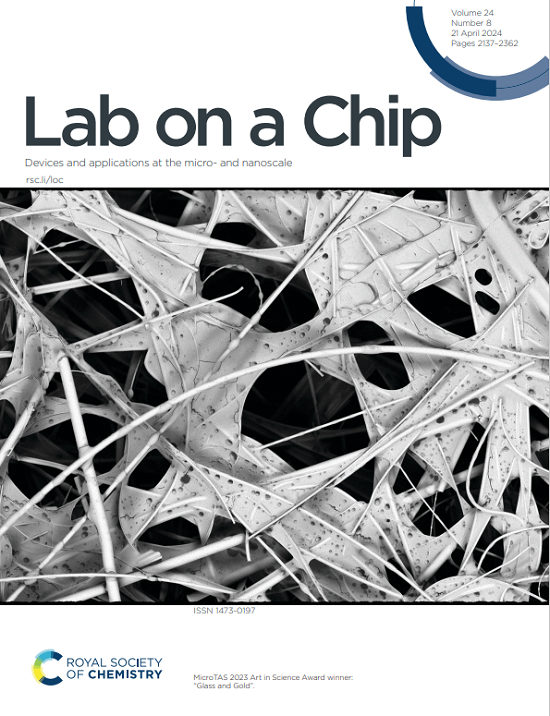Engineering a Diagnostic Platform based on a Spatially Resolved Electrochemiluminescence Immunoassay for Low-Plex Biomarker Detection at Point-of-Care: Mild Traumatic Brain Injury and Cardiac Applications
IF 5.4
2区 工程技术
Q1 BIOCHEMICAL RESEARCH METHODS
引用次数: 0
Abstract
Advancements in diagnostics and disease management rely on measuring biomarkers in physiological samples. While multiplex biomarker detection holds great promise for improving disease detection, monitoring, and treatment, developing robust, user-friendly platforms capable of sensitive, decentralized analysis remains a significant challenge. In this article, we describe the development of a next-generation POC diagnostic platform capable of simultaneously quantifying multiple biomarkers from low-volume samples in a highly sensitive way. The platform incorporates a spatially resolved electrochemiluminescence immunoassay (SR-ECLIA) conceived on a single carbon electrode (allowing up to 50 individual biomarker spots/replicates to be realized simultaneously), a disposable microfluidic 3D printed cartridge engineered to handle the assay, and an advanced demonstrator tabletop ECL read-out device with application software for data acquisition and image analysis. The remarkable performance of the platform was demonstrated with the detection of two independent biomarker panels, one for mild traumatic brain injury and one for a cardiac application, with low, double-digit picogram per milliliter limits of detection (1 – 30 pg mL-1). The proposed platform can be mass-produced at a low cost, and it is fundamentally adaptable to measuring other disease-related biomarker combinations, which could open new medical diagnostic avenues for sensitive low-plex biomarker testing at Point-of-Care (xPOCT).设计一个基于空间分辨电化学发光免疫分析法的诊断平台,用于在护理点检测低plex生物标志物:轻度创伤性脑损伤和心脏应用
诊断和疾病管理的进步依赖于测量生理样本中的生物标志物。虽然多种生物标志物检测在改善疾病检测、监测和治疗方面有着巨大的希望,但开发强大的、用户友好的平台,能够进行敏感的、分散的分析,仍然是一个重大挑战。在本文中,我们描述了下一代POC诊断平台的开发,该平台能够以高灵敏度的方式同时定量小容量样品中的多种生物标志物。该平台集成了一个空间分辨电化学发光免疫分析(SR-ECLIA),该分析基于单个碳电极(允许同时实现多达50个单独的生物标记点/重复),一个一次性微流体3D打印盒设计用于处理该分析,以及一个先进的演示桌面ECL读出设备,该设备带有用于数据采集和图像分析的应用软件。该平台的卓越性能通过检测两个独立的生物标志物面板得到了证明,一个用于轻度创伤性脑损伤,一个用于心脏应用,检测限低,每毫升两位数picogram (1 - 30 pg mL-1)。所提出的平台可以以低成本批量生产,并且从根本上适用于测量其他疾病相关的生物标志物组合,这可能为在医疗点(xPOCT)进行敏感的低复合生物标志物检测开辟新的医学诊断途径。
本文章由计算机程序翻译,如有差异,请以英文原文为准。
求助全文
约1分钟内获得全文
求助全文
来源期刊

Lab on a Chip
工程技术-化学综合
CiteScore
11.10
自引率
8.20%
发文量
434
审稿时长
2.6 months
期刊介绍:
Lab on a Chip is the premiere journal that publishes cutting-edge research in the field of miniaturization. By their very nature, microfluidic/nanofluidic/miniaturized systems are at the intersection of disciplines, spanning fundamental research to high-end application, which is reflected by the broad readership of the journal. Lab on a Chip publishes two types of papers on original research: full-length research papers and communications. Papers should demonstrate innovations, which can come from technical advancements or applications addressing pressing needs in globally important areas. The journal also publishes Comments, Reviews, and Perspectives.
 求助内容:
求助内容: 应助结果提醒方式:
应助结果提醒方式:


